*NURSING > QUESTIONS & ANSWERS > TNCC 8th Edition Provider Course Practice Exam with Rationale (All)
TNCC 8th Edition Provider Course Practice Exam with Rationale
Document Content and Description Below
1. What is the key to a high-performance trauma team? a. Individual goals Rationale: Effective teams are dynamic and interdependent (p. 5). b. Use of TeamSTEPPS Rationale: Team performance is supp... orted by the application of standardized, evidence-based communication tools and practices. TeamSTEPPS addresses one of the key elements for effective team performance (p. 5). c. Identification of a single decision maker Rationale: Effective trauma teams are dynamic, interdependent, and move toward a common goal (p. 5). d. Effective communication Rationale: Skilled communication, cooperation, and coordination are the cornerstones of high-performance teams and high-quality trauma care (p. 5). 2. When obtaining a history for an injured patient, understanding the kinematic concepts associated with the mechanism of injury and energy transfer can initially assist the trauma provider in: a. Evaluating and anticipating the types of injury that may be present Rationale: Mechanism of injury and energy transfer can assist the provider in evaluating and anticipating damage (p. 23). b. Deciding whether law enforcement should be notified Rationale: Various aspects of the history of the traumatic event may help determine the need for law enforcement, but mechanism of injury and energy transfer assist the provider in evaluating and anticipating damage (p. 23). c. Determining needed laboratory tests Rationale: Mechanism of injury and energy transfer can assist the provider in evaluating and anticipating damage, which in turn help direct the need for laboratory tests (p. 23). d. Predicting the need for a surgical procedure Rationale: Mechanism of injury and energy transfer can assist the provider in evaluating and anticipating damage, which in turn help direct the need for surgical procedures (p. 23). 3. The major preventable cause of death in the trauma patient is: a. Airway compromise Rationale: Uncontrolled hemorrhage is the major cause of preventable death after injury, not airway compromise (p. 29). b. Ineffective ventilation Rationale: Uncontrolled hemorrhage is the major cause of preventable death after injury, not ineffective ventilation (p. 29). c. Secondary head injury Rationale: Uncontrolled hemorrhage is the major cause of preventable death after injury, not secondary head injury (p. 29). d. Uncontrolled hemorrhage Rationale: Uncontrolled hemorrhage is the major cause of preventable death after injury, so assessment to identify uncontrolled hemorrhage is key to the initial assessment process (p. 29). This study source was downloaded by 100000823742721 from CourseHero.com on 07-02-2022 10:42:48 GMT -05:00 https://www.coursehero.com/file/79656122/Practice-Exam-with-Rationalepdfpdf/Page 2 of 7 _____________________________________________________________________________________________________________________________________________________ Emergency Nurses Association 930 E. Woodfield Road, Schaumburg, IL 60173 Course Operations: 800.942.0011 Email: CourseOps@ena.org Revision Date: February 2020 8th Edition Provider Course Practice Exam with Rationale 4. The across-the-room observation step in the initial assessment provides the opportunity to: a. Assess for uncontrolled internal hemorrhage Rationale: The across-the-room observation is done to identify uncontrolled external hemorrhage, not internal hemorrhage (p. 28). b. Accurately triage the patient Rationale: The across-the-room observation is done to identify uncontrolled external hemorrhage. It does not affect triage (p. 28). c. Reprioritize circulation before airway or breathing. Rationale: The across-the-room observation is done at the beginning of the primary survey to rapidly assess the need to reprioritize circulation before airway or breathing. This is done if uncontrolled external hemorrhage is identified (p. 28). d. Activate the trauma team Rationale: The trauma team is activated before arrival of the patient (p. 26). 5. Which of the following accurately describes ventilation principles associated with a bag-mask device? a. Ventilate at a rate of 10 to 12 breaths/minute Rationale: If ventilation is ineffective, assist ventilations at 10 to 12 breaths/minute or one every 5 to 6 seconds (p. 32). b. Deliver 100% oxygen Rationale: Delivery of oxygen is helpful for improving oxygenation, not for ventilation (p. 44). c. Compress the bag-mask device completely Rationale: Squeeze the bag just enough to produce visible chest rise every 5 to 6 seconds (10 to 12 breaths per minute, p. 54). d. Maintain the oxygen saturation level between 92% and 94% Rationale: Delivery of oxygen is helpful for improving oxygenation, not for ventilation. Additionally, oxygen saturation of 94% or higher is associated with effective, adequate oxygenation (p. 32). 6. Which of the following is the best measure of the adequacy of cellular perfusion and helps to predict the outcome of resuscitation? a. End-tidal carbon dioxide Rationale: Carbon dioxide measurement is the end-product of ventilation and a reflection of metabolism and pulmonary function. In order to measure cellular perfusion, base deficit in conjunction with serum lactate is the best measure (p. 59). b. Hypoxia Rationale: Hypoxia is associated with poor cellular perfusion, and the best method of determining cellular hypoxia is with a base deficit in conjunction with serum lactate (pp. 51 and 58). c. Base deficit Rationale: Base deficit serves as an endpoint measurement of the adequacy of cellular perfusion and when used in conjunction with serum lactate helps predict the success of the resuscitation (p. 57). d. Oxygen saturation Rationale: Oxygen saturation is valuable for measuring the trend in oxygenation within the bloodstream but does not reflect cellular perfusion (pp. 51 and 58). [Show More]
Last updated: 2 years ago
Preview 1 out of 7 pages

Buy this document to get the full access instantly
Instant Download Access after purchase
Buy NowInstant download
We Accept:

Reviews( 0 )
$10.00
Can't find what you want? Try our AI powered Search
Document information
Connected school, study & course
About the document
Uploaded On
Jul 14, 2022
Number of pages
7
Written in
Additional information
This document has been written for:
Uploaded
Jul 14, 2022
Downloads
0
Views
320

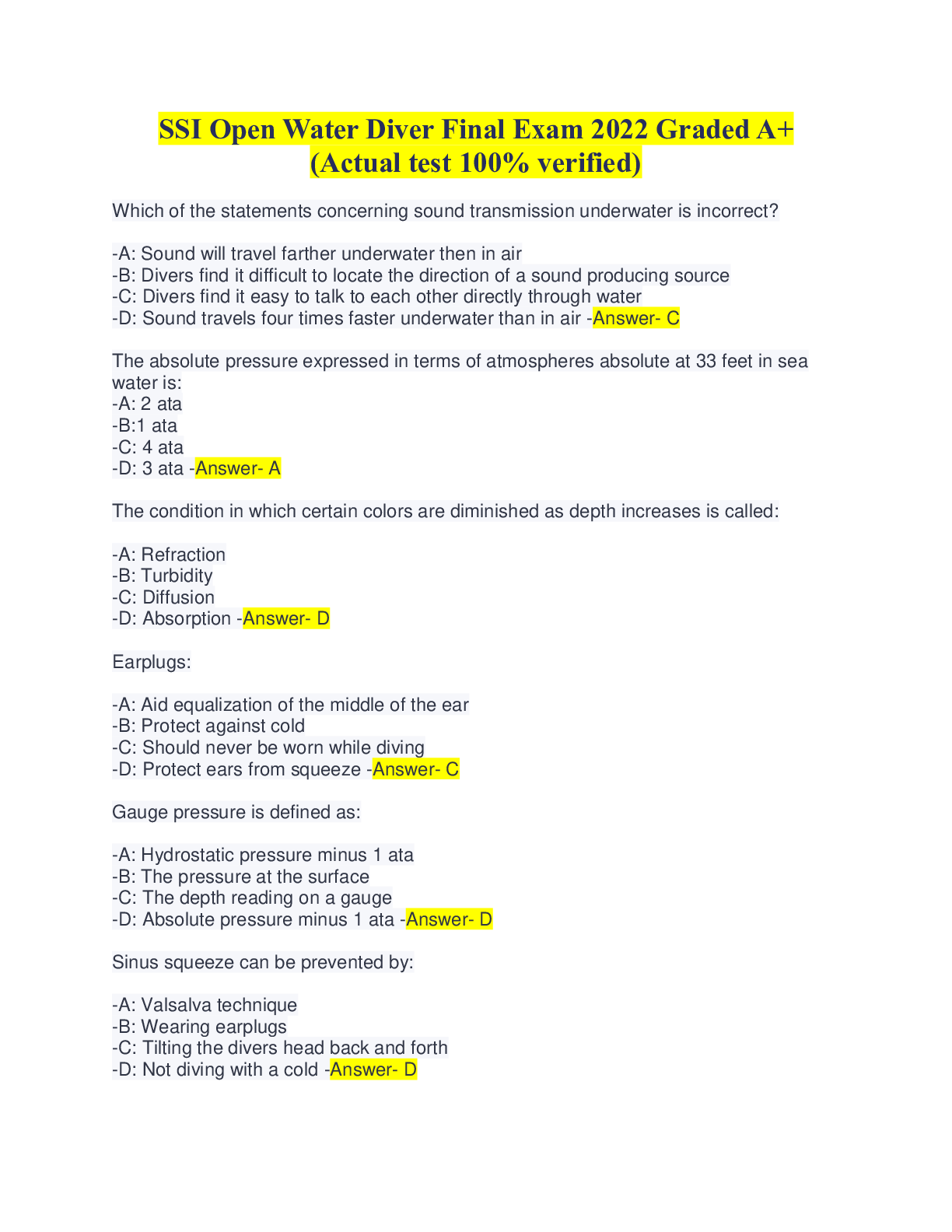


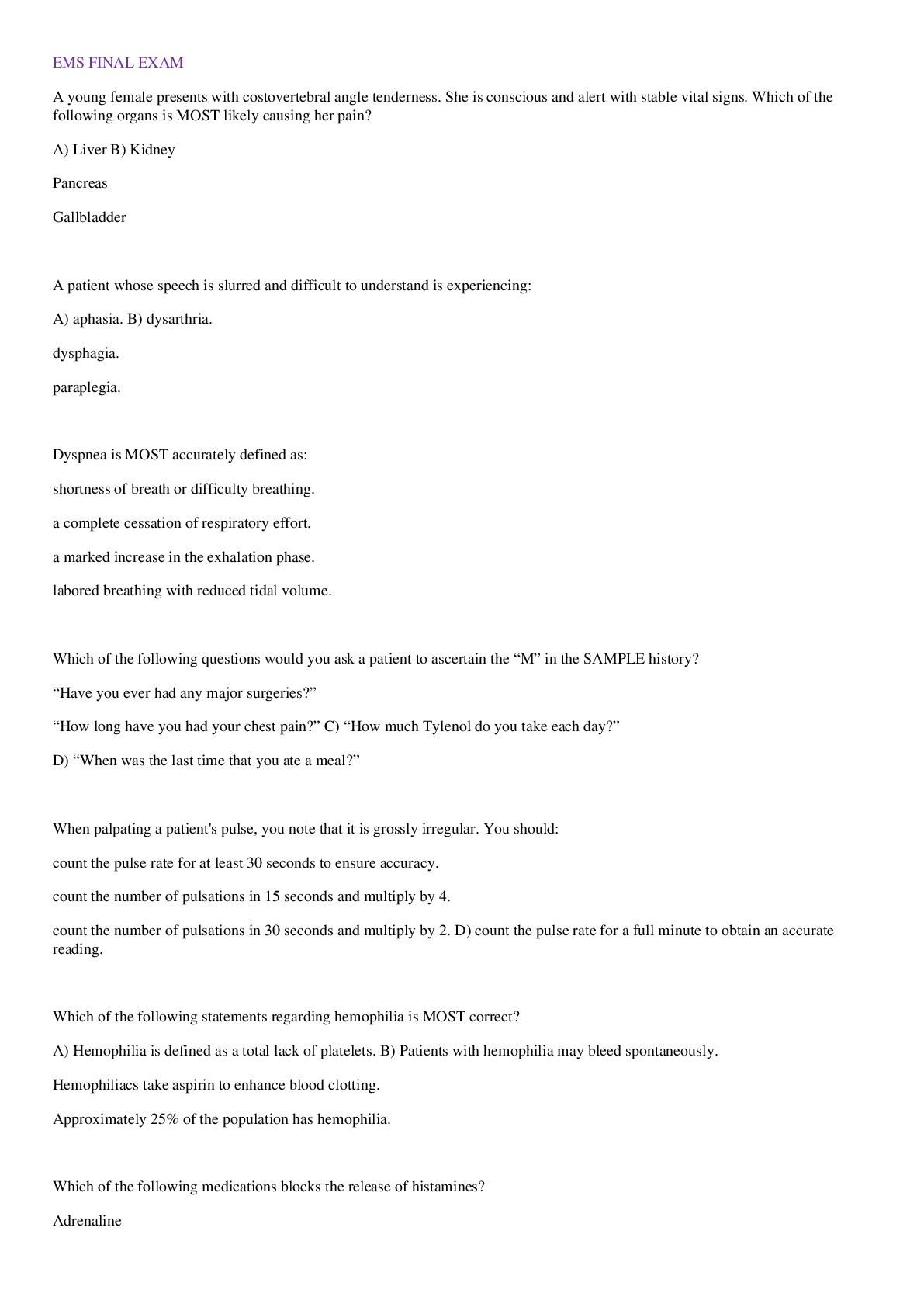

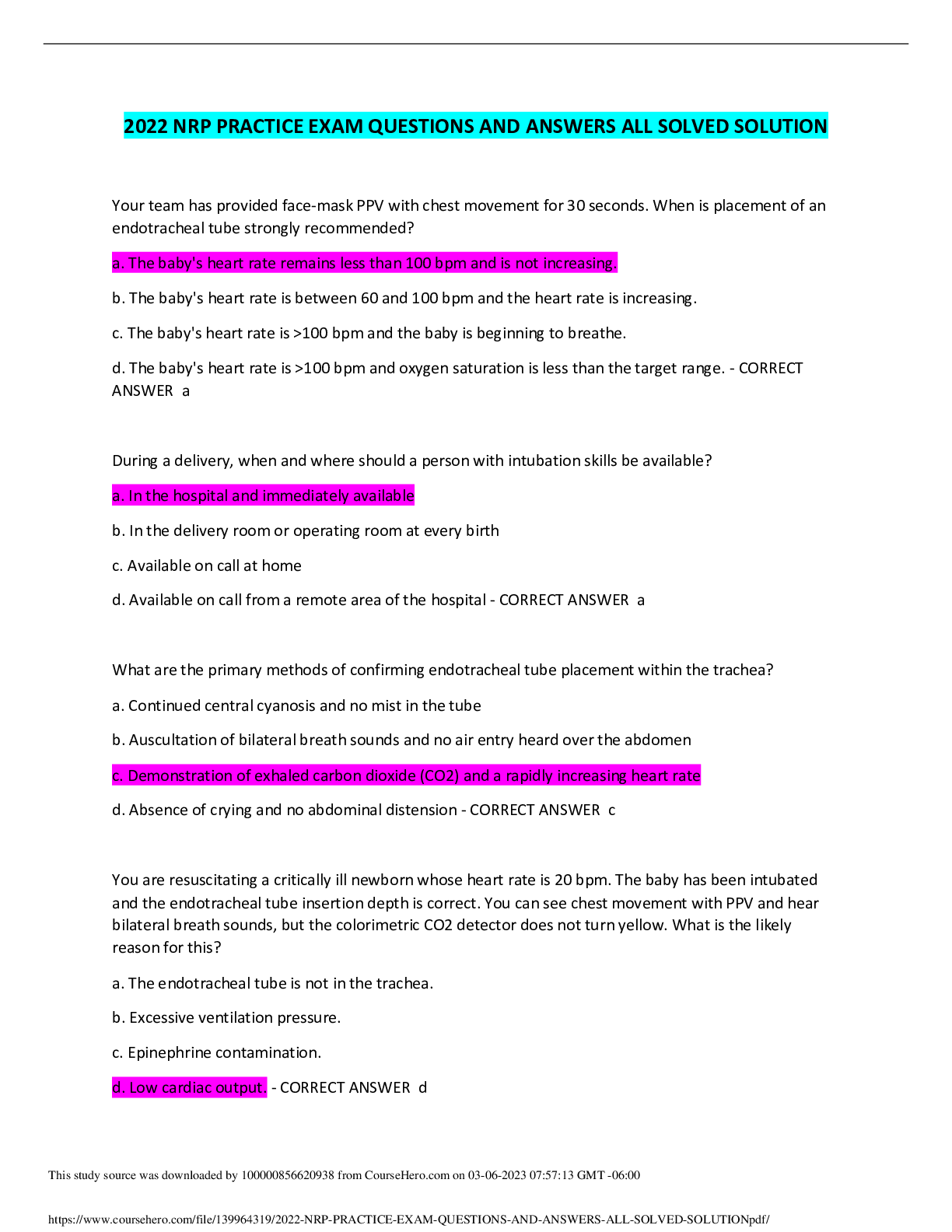
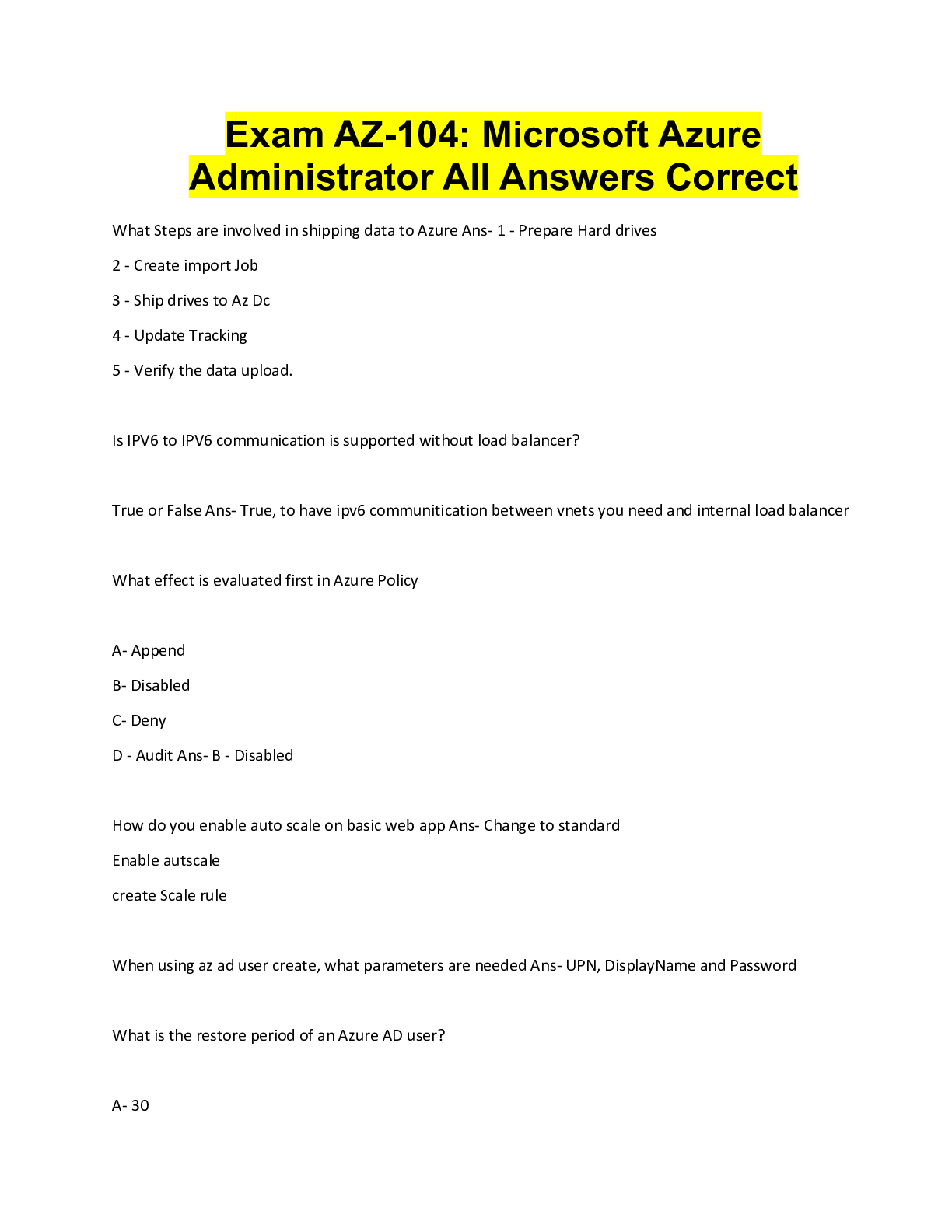
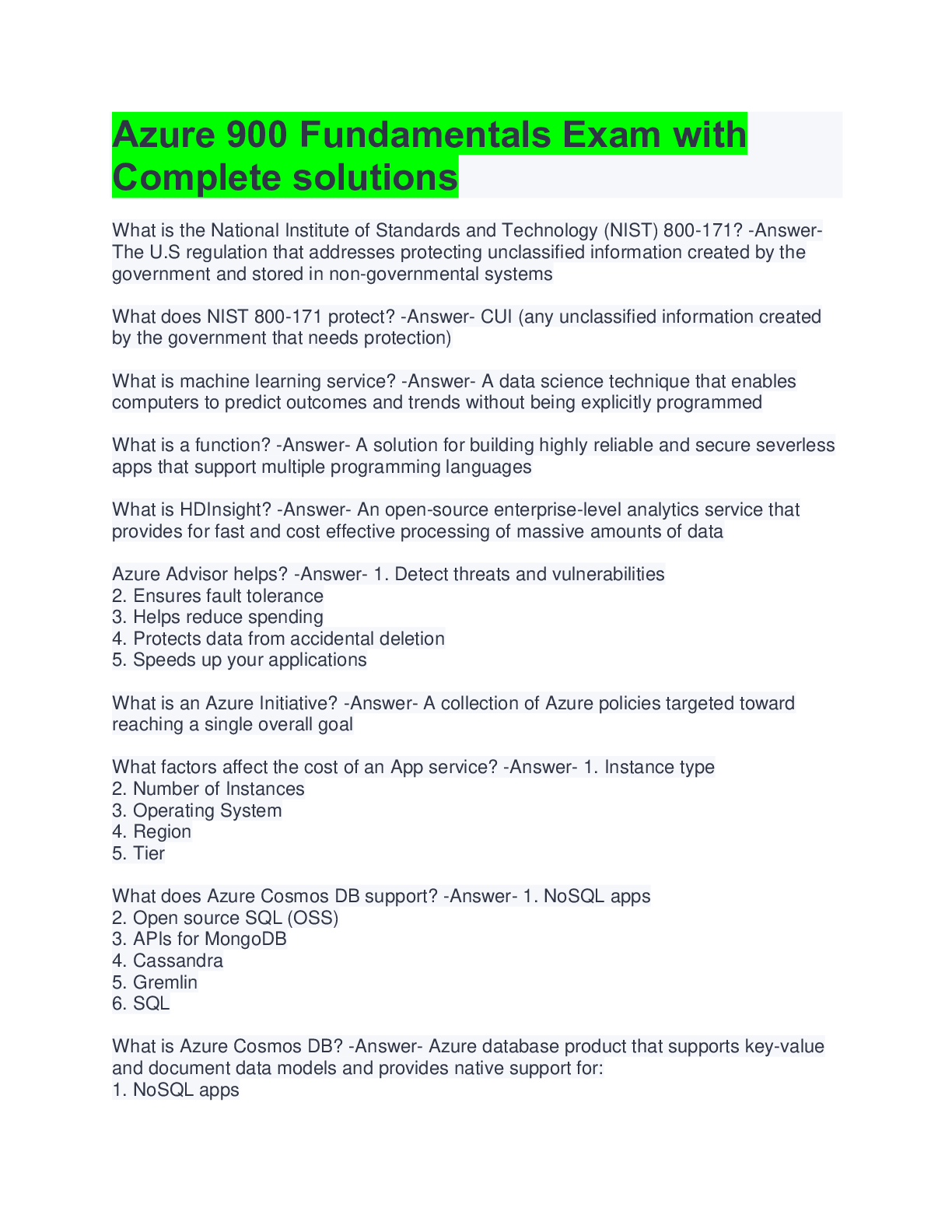
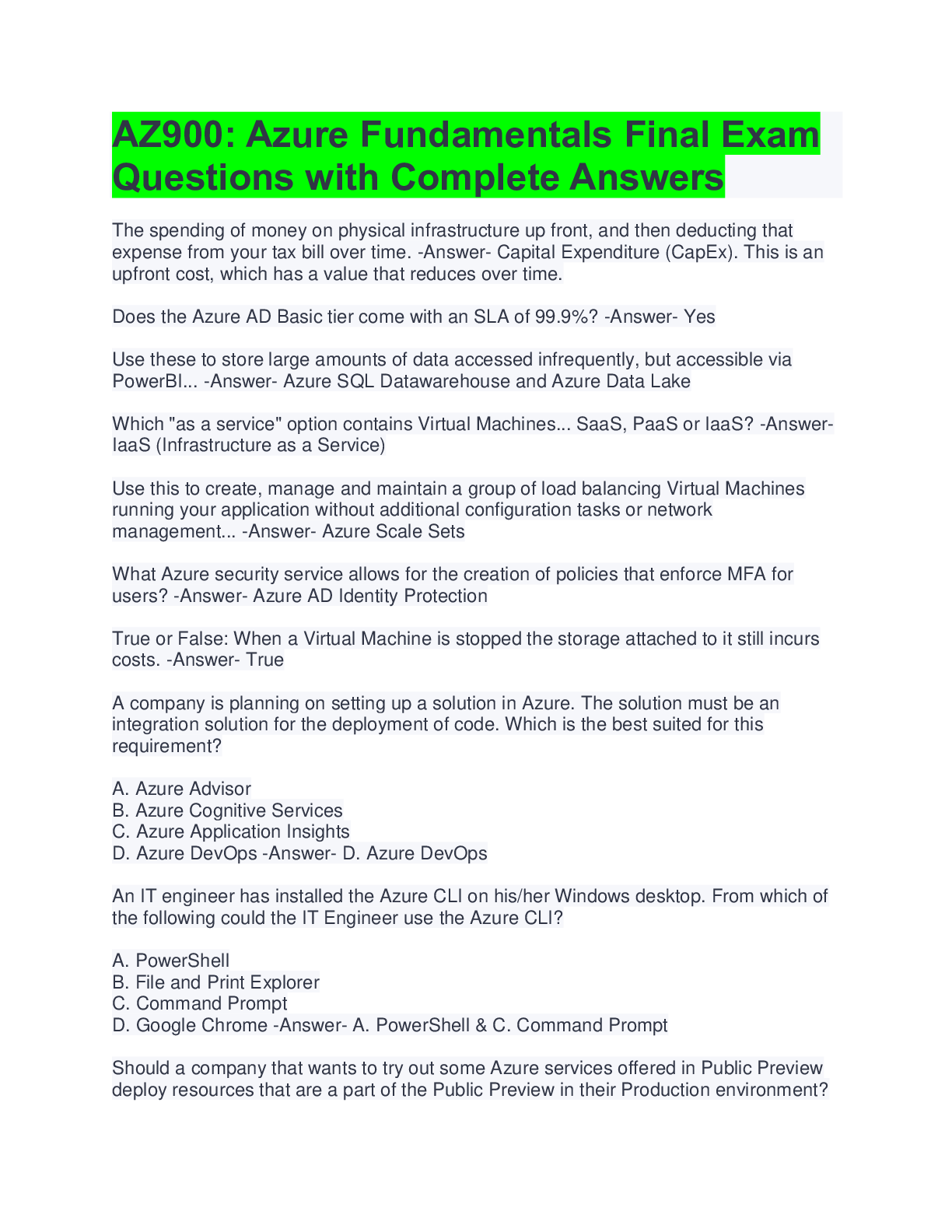
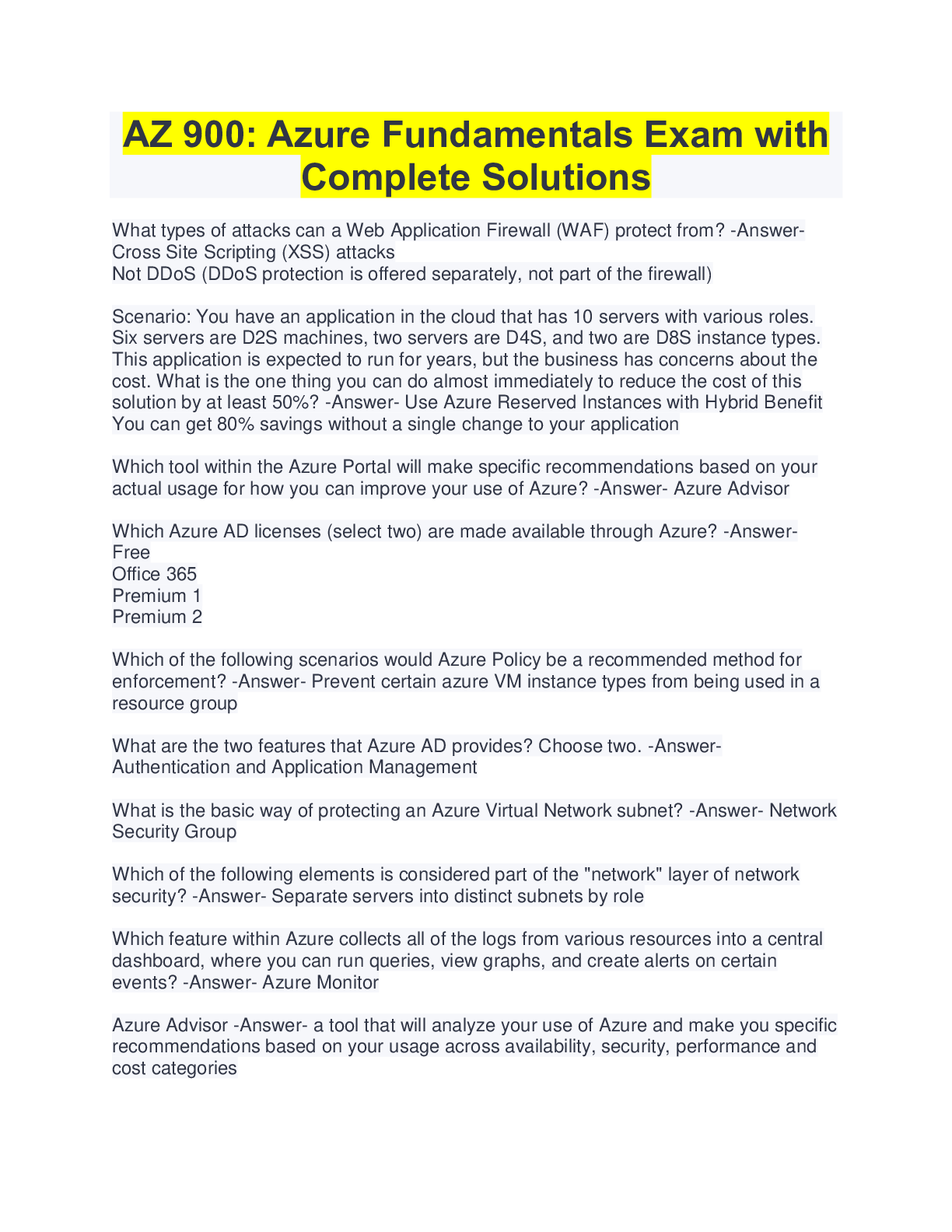
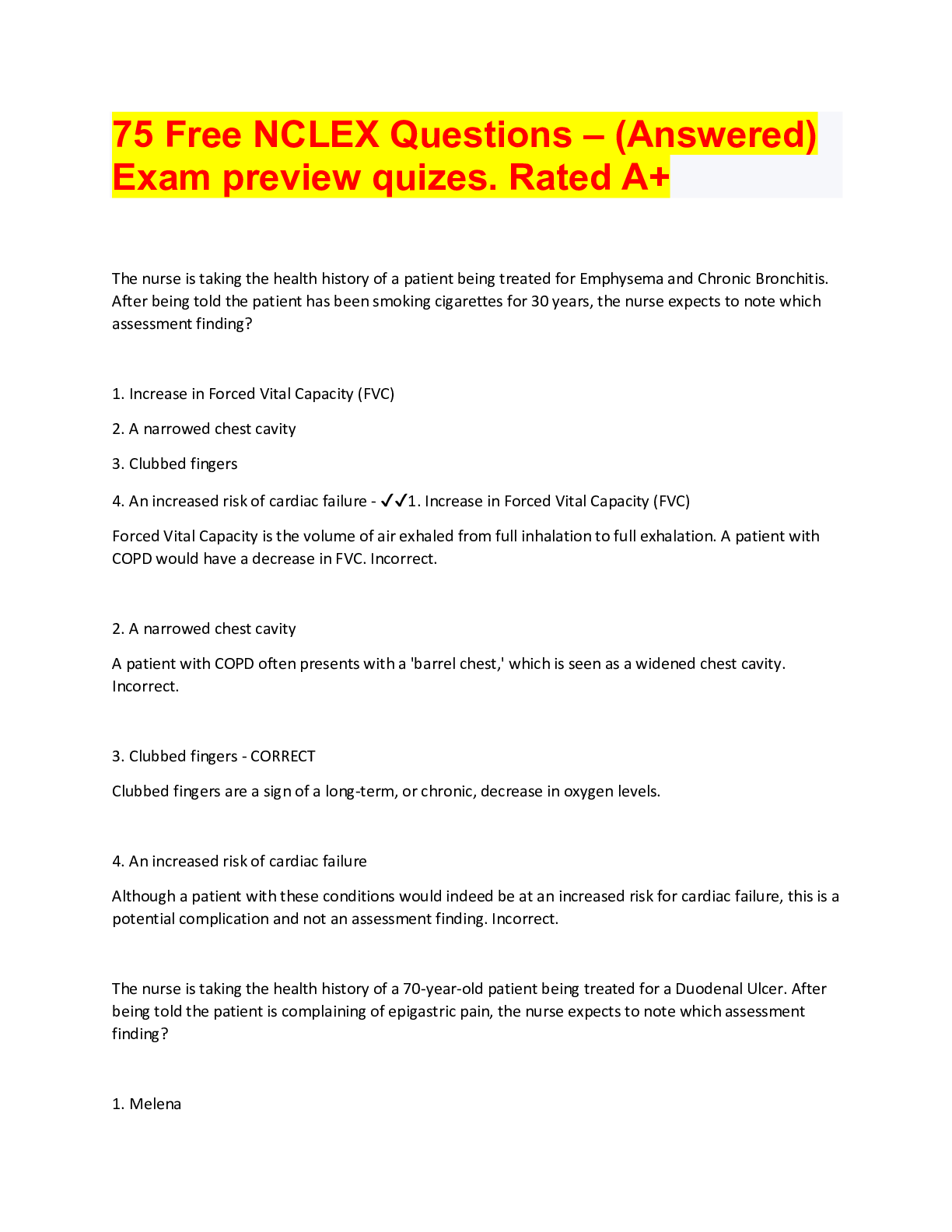



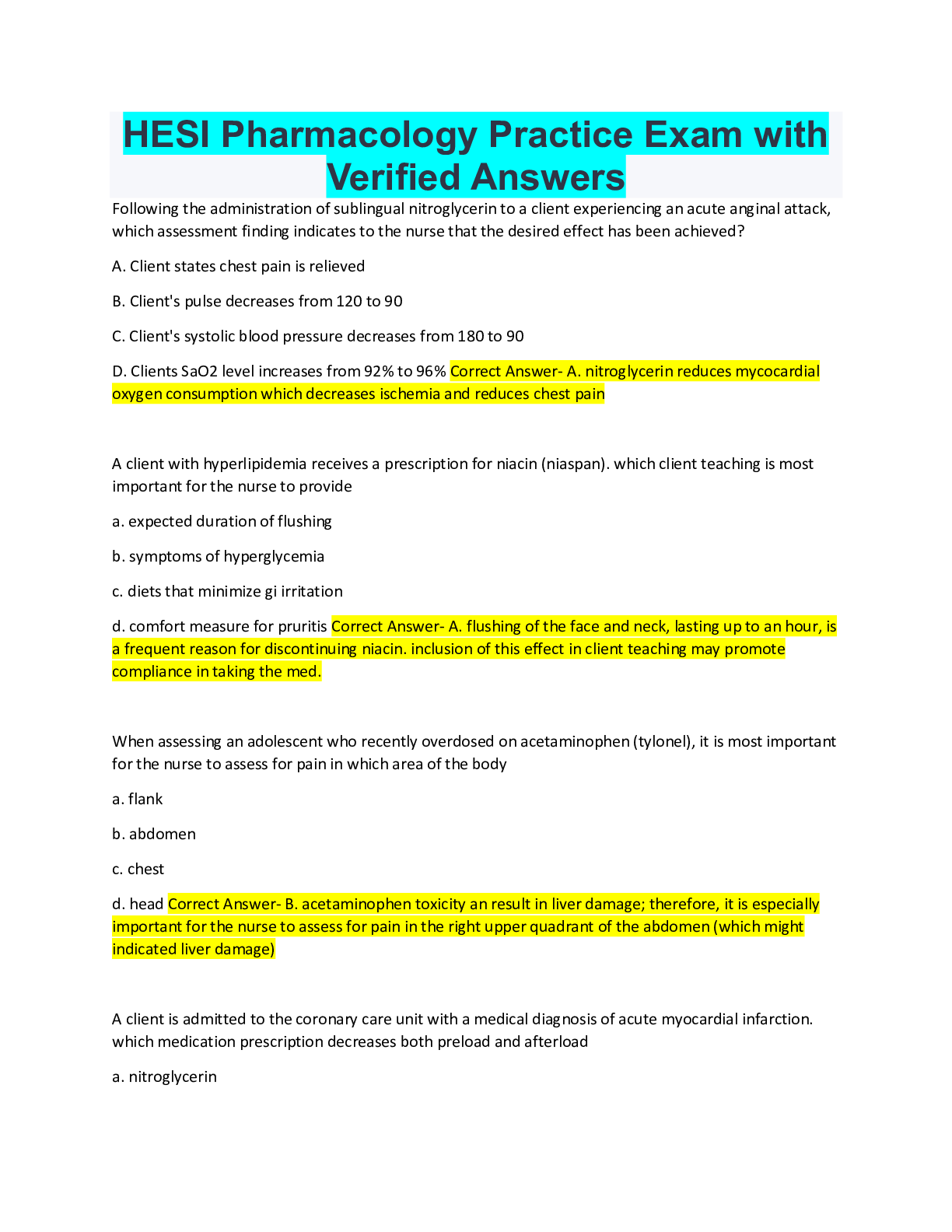

.png)






